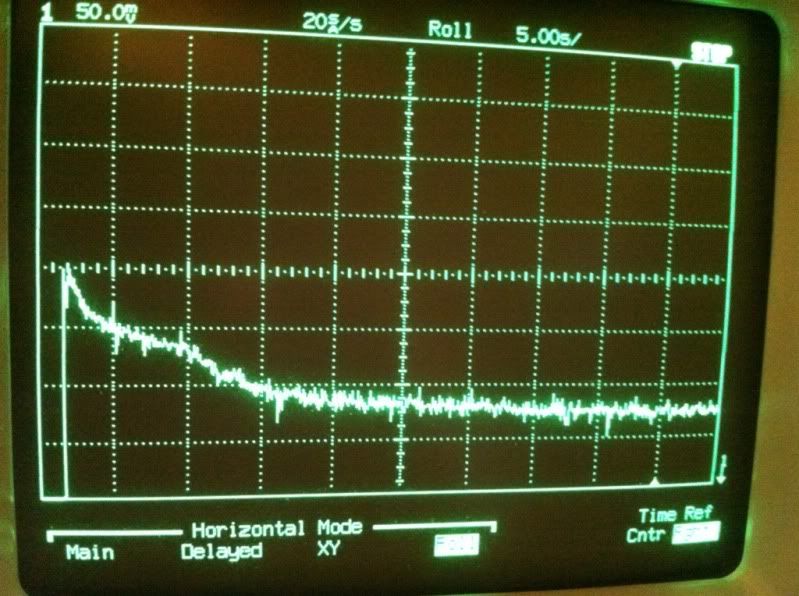I am seeing Vout start high and then drift down over a 10 second period when driving 3A to the load. (LED).
If I hit the converter with freeze spray I see the output come down even farther. If I probe the fb node it appears to be steady around 0.8V during these periods.
DC offset approximately 3.2V. (Vf of a Cree XM-L mounted on a large heat sink). Also, I've tied fsw to Vout. So, it may start out at 2.5MHz and then switch to 1.25MHz as soon as Vout rises. Don't know if that is an issue or not. WIsh I could tie it to Vin, but, Vin could be as high as 9V in this case exceeding fsw voltage specification.
WY



